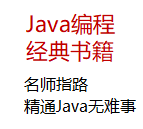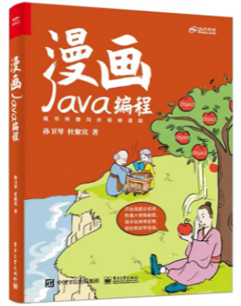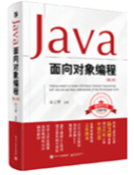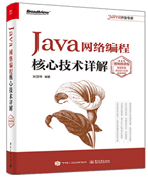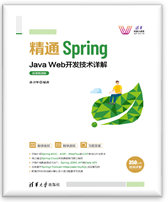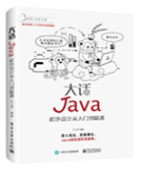|
|
1)服务指的就是运行的节点(IP+Port)信息。
2)节点在启动时会将自身的信息注册到注册中心。
3)ServiceId是对节点运行的工程的标识。
4)InstanceId是对运行的节点的标识。
通过一个例子来捋一捋:
假设有一个和用户管理相关的工程,叫做UserManager。为了高可用,把该工程重复运行了4份,分别用um-01/um-02/um-03/um-04表示。假设它们都运行在本地,端口分别是8081/8082/8083/8084。
它们的注册信息分别是:
ServiceId=UserManager,InstanceId=um-01,IP:Port=127.0.0.1:8081
ServiceId=UserManager,InstanceId=um-02,IP:Port=127.0.0.1:8082
ServiceId=UserManager,InstanceId=um-03,IP:Port=127.0.0.1:8083
ServiceId=UserManager,InstanceId=um-04,IP:Port=127.0.0.1:8084
很显然ServiceId都是一样的,因为本来就是一个工程嘛。如果不想使用工程名的话,可以使用应用名。例如使用spring.application.name表示。
很显然InstanceId都不一样,毕竟实例之间互相独立嘛。这个实例Id通常是在注册时由注册中心自动生成,无需指定。
IP和Port肯定也不一样了,而且也无需指定,程序会自动检测运行时的IP和Port。
简言之,一个服务可以有多个实例,实例之间完全相同又互相独立,假如某个实例挂掉了,没关系,其它实例照样可以提供服务。
×××,非也
“单身狗”是令人可悲的,有一个更可悲的就是同时遇上两个对象,一个是你爱的,一个是爱你的。怎么办?要不一个一三五,一个二四六,周日不限号。哈哈。
“一个”会有单点问题,“多个”虽然解决了这个问题,但是又引入了另一个问题,那就是“选择综合症”。可以看到,随着事物发展,问题自然出现。真的,一切都是那么的自然。
顺便侃一侃我的看法,纯属娱乐一下。选择综合症的主要意思是指,不是担心自己选择的那个不好,而是害怕自己没有选择的那个会更好。
举个例子,假如你一不小心考了个省状元,该去清华呢还是北大呢。去清华吧,害怕万一去北大会更好呢。去北大吧,又担心万一去清华更好呢。为了避免出现以上两种情况,经过一番深思熟虑,最终去了蓝翔。哈哈。
Spring Cloud 深知选择痛苦,众口难调,所以就非常聪明地避开这些问题。那就是做出一套合理的抽象,只有规范,没有细节,每个人根据自己的口味整去吧。
抽象,用过的都说好
Spring Cloud 的目标原本就是做一块“主板”,抽象出合理的“接口”和“布线”,方便其他组件的插拔。
一个ServiceId表示一个服务,但是它可能会有多份实例,我们的请求肯定是在其中的一个实例上被执行的。所以要先能选出一个实例来,才可能会有后续的事情。
于是就有了一个简单粗暴的接口,ServiceInstanceChooser,服务实例选择器:
public interface ServiceInstanceChooser {
/**
* Chooses a ServiceInstance from the LoadBalancer for the specified service.
* @param serviceId The service ID to look up the LoadBalancer.
* @return A ServiceInstance that matches the serviceId.
*/
ServiceInstance choose(String serviceId);
}
这个接口只能为我们选出一个实例,但这是不够的,因为我们还要执行请求啊,所以就有了进一步的接口,LoadBalancerClient,负载均衡器客户端:
public interface LoadBalancerClient extends ServiceInstanceChooser {
/**
* Executes request using a ServiceInstance from the LoadBalancer for the specified
* service.
* @param serviceId The service ID to look up the LoadBalancer.
* @param request Allows implementations to execute pre and post actions, such as
* incrementing metrics.
* @param <T> type of the response
* @throws IOException in case of IO issues.
* @return The result of the LoadBalancerRequest callback on the selected
* ServiceInstance.
*/
<T> T execute(String serviceId, LoadBalancerRequest<T> request) throws IOException;
/**
* Executes request using a ServiceInstance from the LoadBalancer for the specified
* service.
* @param serviceId The service ID to look up the LoadBalancer.
* @param serviceInstance The service to execute the request to.
* @param request Allows implementations to execute pre and post actions, such as
* incrementing metrics.
* @param <T> type of the response
* @throws IOException in case of IO issues.
* @return The result of the LoadBalancerRequest callback on the selected
* ServiceInstance.
*/
<T> T execute(String serviceId, ServiceInstance serviceInstance,
LoadBalancerRequest<T> request) throws IOException;
/**
* Creates a proper URI with a real host and port for systems to utilize. Some systems
* use a URI with the logical service name as the host, such as
* http://myservice/path/to/service. This will replace the service name with the
* host:port from the ServiceInstance.
* @param instance service instance to reconstruct the URI
* @param original A URI with the host as a logical service name.
* @return A reconstructed URI.
*/
URI reconstructURI(ServiceInstance instance, URI original);
}
先来看第三个方法,重新构建URI,为什么要重新构建呢?其实原因很简单,下面通过例子说明。
假如我要写一个“用户查询”的地址,可是有四个服务实例呢,到底该写哪个IP和端口呢?既然不知道,那干脆就只写一个标识符(或称占位符)吧,到时让程序动态选择一个得了。
于是地址就是这样的:http://UserManager/users/queryDetails/{userId},这里的UserManager其实就是ServiceId了,运行时程序会把它替换为四份实例中的一个的地址,于是就变为:http://IP:Port/users/queryDetails/{userId}。
这就是对URI的重新构建,好理解吧。这其实就是众人皆知的负载均衡的原理了。
再看前两个方法,虽然形式不同,但本质一样,都是在一个实例上执行一个请求,并返回响应。所以方法名都叫执行。具体怎么执行请求,那就要看实现类怎么实现了。
但是比执行一个请求更重要的是,如何表示一个请求?
a)如果是执行一个普通Java方法的话,需要有方法本身Method,目标对象Object,方法参数Args。
b)如果要执行的是一个HTTP请求的话,需要有请求方法Method(GET/POST等),请求地址URL,还有一些参数,如表单数据,查询字符串或头信息等。
那这里的请求应该如何表示呢?就是这个接口,LoadBalancerRequest<T>:
public interface LoadBalancerRequest<T> {
T apply(ServiceInstance instance) throws Exception;
}
看完上面的源码后,发现只有一个apply方法,泛型参数T就表示响应。意思就是在选出的服务实例上“应用”一下,就得到了响应。这也太抽象了吧,完全看不出意图是什么。
那就再找找有没有和它相似接口,很容找到一个,LoadBalancerRequestTransformer,请求转换器:
public interface LoadBalancerRequestTransformer {
/**
* Order for the load balancer request tranformer.
*/
int DEFAULT_ORDER = 0;
HttpRequest transformRequest(HttpRequest request, ServiceInstance instance);
}
也只有一个转换请求方法,可以根据服务实例完成对HttpRequest的转换。我们发现这里的请求是基于HTTP的,也就是说微服务之间是使用HTTP协议进行调用的。那为啥是Http呢?
因为现在的微服务理论好多都是来自 Martin Fowler 的那篇微服务的文章,下面是其中一句话:
In short, the microservice architectural style is an approach to developing a single application as a suite of small services, each running in its own process and communicating with lightweight mechanisms, often an HTTP resource API.
里面写到:“使用轻量级的机制通信,通常是HTTP资源API”,即restful形式的。所以 Spring Cloud 里面通常使用RestTemplate调用其它微服务。
现在只要能创建出LoadBalancerRequest接口的实例,然后在选出的服务实例上apply一下,就可以获取到响应了。正好有一个工厂类来负责创建,它就是LoadBalancerRequestFactory:
public class LoadBalancerRequestFactory {
private LoadBalancerClient loadBalancer;
private List<LoadBalancerRequestTransformer> transformers;
public LoadBalancerRequestFactory(LoadBalancerClient loadBalancer,
List<LoadBalancerRequestTransformer> transformers) {
this.loadBalancer = loadBalancer;
this.transformers = transformers;
}
public LoadBalancerRequestFactory(LoadBalancerClient loadBalancer) {
this.loadBalancer = loadBalancer;
}
public LoadBalancerRequest<ClientHttpResponse> createRequest(
final HttpRequest request, final byte[] body,
final ClientHttpRequestExecution execution) {
return instance -> {
HttpRequest serviceRequest = new ServiceRequestWrapper(request, instance,
this.loadBalancer);
if (this.transformers != null) {
for (LoadBalancerRequestTransformer transformer : this.transformers) {
serviceRequest = transformer.transformRequest(serviceRequest,
instance);
}
}
return execution.execute(serviceRequest, body);
};
}
}
通过lambda表达式返回一个接口实例,在该实例上调用apply方法时会执行这个lambda表达式。
这个lambda表达式主要做三件事:
1)一是使用选出来的实例的IP和Port重新构建HttpRequest中的URI,
2)二是使用转换器对HttpRequest进行转换,
3)三是进行Http请求调用。
其中第三步其实使用的是spring-web工程里面的http客户端机制发起调用了,因为被ClientHttpRequestExecution这个类给暴露了,它的背后是抽象好的一套完善的http客户端机制。
spring-web里的http客户端模型
发送http请求,获取响应,这是很常见的功能,其实就是一个http的客户端,所以Spring框架就给实现了,位于spring-web工程里的org.springframework.http.client包下。
它的模型或者说抽象思路并不复杂,有一点需要注意,这是站在客户端的角度的,和我们经常遇到的服务器端正好相反。
Http是基于请求/响应的,所以得有个请求,ClientHttpRequest,客户端请求接口:
public interface ClientHttpRequest extends HttpRequest, HttpOutputMessage {
/**
* Execute this request, resulting in a {@link ClientHttpResponse} that can be read.
* @return the response result of the execution
* @throws IOException in case of I/O errors
*/
ClientHttpResponse execute() throws IOException;
}
我们要把请求信息写入这个接口,以客户端的立场来看相当于“输出”,所以继承了HttpOutputMessage接口。它只有一个方法,叫执行,直接就返回响应。
所以响应就是,ClientHttpResponse,客户端响应接口:
public interface ClientHttpResponse extends HttpInputMessage, Closeable {
/**
* Return the HTTP status code of the response.
* @return the HTTP status as an HttpStatus enum value
* @throws IOException in case of I/O errors
* @throws IllegalArgumentException in case of an unknown HTTP status code
* @see HttpStatus#valueOf(int)
*/
HttpStatus getStatusCode() throws IOException;
/**
* Return the HTTP status code (potentially non-standard and not
* resolvable through the {@link HttpStatus} enum) as an integer.
* @return the HTTP status as an integer
* @throws IOException in case of I/O errors
* @since 3.1.1
* @see #getStatusCode()
* @see HttpStatus#resolve(int)
*/
int getRawStatusCode() throws IOException;
/**
* Return the HTTP status text of the response.
* @return the HTTP status text
* @throws IOException in case of I/O errors
*/
String getStatusText() throws IOException;
/**
* Close this response, freeing any resources created.
*/
@Override
void close();
}
我们要把结果从这个接口中读出来,以客户端的立场来看相当于“输入”,所以继承了HttpInputMessage接口。
可以看到,只要能够获取“请求接口”的实例,就可以调用“执行”方法了。按照惯例,自然有相关的工厂类来创建实例了,ClientHttpRequestFactory,客户端请求工厂:
public interface ClientHttpRequestFactory {
/**
* Create a new {@link ClientHttpRequest} for the specified URI and HTTP method.
* <p>The returned request can be written to, and then executed by calling
* {@link ClientHttpRequest#execute()}.
* @param uri the URI to create a request for
* @param httpMethod the HTTP method to execute
* @return the created request
* @throws IOException in case of I/O errors
*/
ClientHttpRequest createRequest(URI uri, HttpMethod httpMethod) throws IOException;
}
它是一个工厂接口,那么它的实现类就非常重要了,只要拿到了实现类,就相当于拿到了“响应”了。
为了使整个处理过程更加灵活,又引入了老掉牙的套路,就是拦截器了,ClientHttpRequestInterceptor,客户端请求拦截器:
public interface ClientHttpRequestInterceptor {
/**
* Intercept the given request, and return a response. The given
* {@link ClientHttpRequestExecution} allows the interceptor to pass on the
* request and response to the next entity in the chain.
* <p>A typical implementation of this method would follow the following pattern:
* <ol>
* <li>Examine the {@linkplain HttpRequest request} and body</li>
* <li>Optionally {@linkplain org.springframework.http.client.support.HttpRequestWrapper
* wrap} the request to filter HTTP attributes.</li>
* <li>Optionally modify the body of the request.</li>
* <li><strong>Either</strong>
* <ul>
* <li>execute the request using
* {@link ClientHttpRequestExecution#execute(org.springframework.http.HttpRequest, byte[])},</li>
* <strong>or</strong>
* <li>do not execute the request to block the execution altogether.</li>
* </ul>
* <li>Optionally wrap the response to filter HTTP attributes.</li>
* </ol>
* @param request the request, containing method, URI, and headers
* @param body the body of the request
* @param execution the request execution
* @return the response
* @throws IOException in case of I/O errors
*/
ClientHttpResponse intercept(HttpRequest request, byte[] body, ClientHttpRequestExecution execution)
throws IOException;
}
拦截器和过滤器是一样的,多个过滤器构成一个过滤器链,在链的尽头会调用Servlet。多个拦截器也构成一个拦截器链,在链的尽头会真正的发起http调用。
所以需要另外一个接口,ClientHttpRequestExecution,就是为了配合实现过滤器链的:
public interface ClientHttpRequestExecution {
/**
* Execute the request with the given request attributes and body,
* and return the response.
* @param request the request, containing method, URI, and headers
* @param body the body of the request to execute
* @return the response
* @throws IOException in case of I/O errors
*/
ClientHttpResponse execute(HttpRequest request, byte[] body) throws IOException;
}
说到这里顺便给大家推荐一个Java架构方面的交流学习群:536976563,点击立即加入里面会免费分享一些资深架构师录制的视频录像:有Spring,MyBatis,Netty源码分析,高并发、高性能、分布式、微服务架构的原理,JVM性能优化这些成为架构师必备的知识体系。还能领取免费的学习资源和前辈的面试经验和面试题,相信对于已经工作和遇到技术瓶颈的码友,在这个群里会有你需要的内容。
所以在工厂创建一个请求接口实例时,会把拦截器直接包含进去,InterceptingClientHttpRequestFactory,这个类是对一个真正工厂的“装饰”,目的就是为了把拦截器链添加进去:
public class InterceptingClientHttpRequestFactory extends AbstractClientHttpRequestFactoryWrapper {
private final List<ClientHttpRequestInterceptor> interceptors;
/**
* Create a new instance of the {@code InterceptingClientHttpRequestFactory} with the given parameters.
* @param requestFactory the request factory to wrap
* @param interceptors the interceptors that are to be applied (can be {@code null})
*/
public InterceptingClientHttpRequestFactory(ClientHttpRequestFactory requestFactory,
@Nullable List<ClientHttpRequestInterceptor> interceptors) {
super(requestFactory);
this.interceptors = (interceptors != null ? interceptors : Collections.emptyList());
}
@Override
protected ClientHttpRequest createRequest(URI uri, HttpMethod httpMethod, ClientHttpRequestFactory requestFactory) {
return new InterceptingClientHttpRequest(requestFactory, this.interceptors, uri, httpMethod);
}
}
它的父类里包含了真正的工厂实例,那才是用来真正创建请求实例的。
还需要一个类来处理链式调用的逻辑,InterceptingRequestExecution,就是如果后面还有拦截器,就执行后面的拦截器,否则就发起http调用:
private class InterceptingRequestExecution implements ClientHttpRequestExecution {
private final Iterator<ClientHttpRequestInterceptor> iterator;
public InterceptingRequestExecution() {
this.iterator = interceptors.iterator();
}
@Override
public ClientHttpResponse execute(HttpRequest request, byte[] body) throws IOException {
if (this.iterator.hasNext()) {
ClientHttpRequestInterceptor nextInterceptor = this.iterator.next();
return nextInterceptor.intercept(request, body, this);
}
else {
HttpMethod method = request.getMethod();
Assert.state(method != null, "No standard HTTP method");
ClientHttpRequest delegate = requestFactory.createRequest(request.getURI(), method);
request.getHeaders().forEach((key, value) -> delegate.getHeaders().addAll(key, value));
if (body.length > 0) {
if (delegate instanceof StreamingHttpOutputMessage) {
StreamingHttpOutputMessage streamingOutputMessage = (StreamingHttpOutputMessage) delegate;
streamingOutputMessage.setBody(outputStream -> StreamUtils.copy(body, outputStream));
}
else {
StreamUtils.copy(body, delegate.getBody());
}
}
return delegate.execute();
}
}
}
可以看它的执行方法,前面都是对拦截器的逐个迭代调用,最后是使用工厂创建了一个请求接口的实例,然后调用该实例的执行方法,返回响应。
这就是http客户端的整体情况,这只是抽象,不包括具体实现的,所以不算复杂。那么Spring也提供了四种实现:
基于 Apache HttpComponents 的实现,基于 Netty4 的实现,基于OkHttp3 的实现,还有基于JDK的 HttpURLConnection 的实现。
其实RestTemplate就是一个rest风格的http客户端,内部机制和上面完全一样,只是添加了很多好用的rest风格的便捷方法而已。
让RestTemplate支持微服务调用
从上面得知,RestTemplate就是一个rest风格的http客户端,使用它在Spring Cloud内部进行微服务调用是再合适不过了。
但是会有一个问题,微服务调用时只能指定ServiceId,IP和Port是动态发现的。RestTemplate是不具备这个功能的。但是要加上这个功能也是很简单的。
只需在中间某个环节拦截住执行流程,把ServiceId替换为动态发现的IP和Port,不就搞定了嘛。这种能力自然非拦截器莫属了。
所以Spring Cloud就专门实现了一个拦截器,LoadBalancerInterceptor,负载均衡器拦截器:
public class LoadBalancerInterceptor implements ClientHttpRequestInterceptor {
private LoadBalancerClient loadBalancer;
private LoadBalancerRequestFactory requestFactory;
public LoadBalancerInterceptor(LoadBalancerClient loadBalancer,
LoadBalancerRequestFactory requestFactory) {
this.loadBalancer = loadBalancer;
this.requestFactory = requestFactory;
}
public LoadBalancerInterceptor(LoadBalancerClient loadBalancer) {
// for backwards compatibility
this(loadBalancer, new LoadBalancerRequestFactory(loadBalancer));
}
@Override
public ClientHttpResponse intercept(final HttpRequest request, final byte[] body,
final ClientHttpRequestExecution execution) throws IOException {
final URI originalUri = request.getURI();
String serviceName = originalUri.getHost();
Assert.state(serviceName != null,
"Request URI does not contain a valid hostname: " + originalUri);
return this.loadBalancer.execute(serviceName,
this.requestFactory.createRequest(request, body, execution));
}
}
其实就是在一个负载均衡器上执行一个负载均衡请求,这个负载均衡请求实例,虽然是工厂创建出来的,其实就是一个lambda表达式,就起一个包装作用。
为了将这个拦截器应用到RestTemplate上,特意定义了这个接口,RestTemplateCustomizer,RestTemplate自定制器:
public interface RestTemplateCustomizer {
void customize(RestTemplate restTemplate);
}
再来看这个具体的应用过程,是一个@Configuration类,LoadBalancerInterceptorConfig,拦截器配置:
@Configuration
@ConditionalOnMissingClass("org.springframework.retry.support.RetryTemplate")
static class LoadBalancerInterceptorConfig {
@Bean
public LoadBalancerInterceptor ribbonInterceptor(
LoadBalancerClient loadBalancerClient,
LoadBalancerRequestFactory requestFactory) {
return new LoadBalancerInterceptor(loadBalancerClient, requestFactory);
}
@Bean
@ConditionalOnMissingBean
public RestTemplateCustomizer restTemplateCustomizer(
final LoadBalancerInterceptor loadBalancerInterceptor) {
return restTemplate -> {
List<ClientHttpRequestInterceptor> list = new ArrayList<>(
restTemplate.getInterceptors());
list.add(loadBalancerInterceptor);
restTemplate.setInterceptors(list);
};
}
}
首先把RestTemplate里的所有拦截器都取出来,然后把负载均衡器拦截器添加到最后,最后再设置回RestTemplate中。
意思就是,在即将发起请求的上一步中,重新构建URI,把ServiceId替换为动态发现的真正的IP和Port,很好理解吧。
至此,RestTemplate就具备了客户端负载均衡的能力了。但是RestTemplate一开始并不是为Spring Cloud而生的,所以需要区分一下,哪些RestTemplate具备微服务调用的能力,哪些不具备。
为此,Spring Cloud专门定义了一个注解,@LoadBalanced,来为RestTemplate开启这种能力:
@Target({ ElementType.FIELD, ElementType.PARAMETER, ElementType.METHOD })
@Retention(RetentionPolicy.RUNTIME)
@Documented
@Inherited
@Qualifier
public @interface LoadBalanced {
}
只要在注册RestTemplate时标上这个注解,那么这个RestTemplate就可以用来进行微服务调用了,
Netflix的ribbon组件
Spring Cloud的客户端负载均衡机制只是一套抽象。ribbon具有客户端负载均衡能力,但是和Spring Cloud完全没有关系。
要想把ribbon纳入Spring Cloud体系,就必须写代码实现这套抽象,把真正要做的事情委托给ribbon去做。可以理解为在Spring Cloud的机制和ribbon之间架起一座桥梁。
为了便于从整体上把握,使用RestTemplate把所有的知识点串一下,会变的比较清晰一些,也更容易理解。
当把@LoadBalanced注解标记在RestTemplate上时,表明需要开启微服务调用的能力。因为RestTemplate本质是基于spring-web里的http客户端实现的,所以只能按照这个客户端的机制去扩展。
所以此时会自动为RestTemplate再添加一个额外的拦截器,LoadBalancerInterceptor,这个拦截器就把我们拉入到Spring Cloud的范畴里了,因为它需要依赖两个类,LoadBalancerClient和LoadBalancerRequestFactory。
LoadBalancerClient是一个接口,需要有人实现它,稍后再说。LoadBalancerRequestFactory本身就是一个类,它使用Spring Cloud客户端负载均衡的理论把一个HttpRequest进行包装和预处理,最终委托给http客户端去发起真正的http调用。
所以我们刚刚从http客户端机制里被拉入到Spring Cloud客户端负载均衡理论里,又立马被拉回到http客户端机制里了。其实就是借助于RestTemplate把Spring Cloud的客户端负载均衡理论和http客户端机制相结合起来。
那么在Spring Cloud客户端负载均衡理论里需要实现一个接口,就是刚刚提到的LoadBalancerClient。在spring-web的http客户端机制里需要实现两个接口(其实好几个呢),ClientHttpRequest和ClientHttpRequestFactory。
因此在基于ribbon的实现(spring-cloud-netflix-ribbon)里,一定能找到这三个接口的实现类。
LoadBalancerClient接口的实现类是RibbonLoadBalancerClient,它的所有功能都是依赖于ribbon自身的能力来提供的。其实相当于一个适配器了。
public class RibbonLoadBalancerClient implements LoadBalancerClient {
private SpringClientFactory clientFactory;
public RibbonLoadBalancerClient(SpringClientFactory clientFactory) {
this.clientFactory = clientFactory;
}
@Override
public URI reconstructURI(ServiceInstance instance, URI original) {
Assert.notNull(instance, "instance can not be null");
String serviceId = instance.getServiceId();
RibbonLoadBalancerContext context = this.clientFactory
.getLoadBalancerContext(serviceId);
URI uri;
Server server;
if (instance instanceof RibbonServer) {
RibbonServer ribbonServer = (RibbonServer) instance;
server = ribbonServer.getServer();
uri = updateToSecureConnectionIfNeeded(original, ribbonServer);
}
else {
server = new Server(instance.getScheme(), instance.getHost(),
instance.getPort());
IClientConfig clientConfig = clientFactory.getClientConfig(serviceId);
ServerIntrospector serverIntrospector = serverIntrospector(serviceId);
uri = updateToSecureConnectionIfNeeded(original, clientConfig,
serverIntrospector, server);
}
return context.reconstructURIWithServer(server, uri);
}
@Override
public ServiceInstance choose(String serviceId) {
return choose(serviceId, null);
}
/**
* New: Select a server using a 'key'.
* @param serviceId of the service to choose an instance for
* @param hint to specify the service instance
* @return the selected {@link ServiceInstance}
*/
public ServiceInstance choose(String serviceId, Object hint) {
Server server = getServer(getLoadBalancer(serviceId), hint);
if (server == null) {
return null;
}
return new RibbonServer(serviceId, server, isSecure(server, serviceId),
serverIntrospector(serviceId).getMetadata(server));
}
@Override
public <T> T execute(String serviceId, LoadBalancerRequest<T> request)
throws IOException {
return execute(serviceId, request, null);
}
/**
* New: Execute a request by selecting server using a 'key'. The hint will have to be
* the last parameter to not mess with the `execute(serviceId, ServiceInstance,
* request)` method. This somewhat breaks the fluent coding style when using a lambda
* to define the LoadBalancerRequest.
* @param <T> returned request execution result type
* @param serviceId id of the service to execute the request to
* @param request to be executed
* @param hint used to choose appropriate {@link Server} instance
* @return request execution result
* @throws IOException executing the request may result in an {@link IOException}
*/
public <T> T execute(String serviceId, LoadBalancerRequest<T> request, Object hint)
throws IOException {
ILoadBalancer loadBalancer = getLoadBalancer(serviceId);
Server server = getServer(loadBalancer, hint);
if (server == null) {
throw new IllegalStateException("No instances available for " + serviceId);
}
RibbonServer ribbonServer = new RibbonServer(serviceId, server,
isSecure(server, serviceId),
serverIntrospector(serviceId).getMetadata(server));
return execute(serviceId, ribbonServer, request);
}
@Override
public <T> T execute(String serviceId, ServiceInstance serviceInstance,
LoadBalancerRequest<T> request) throws IOException {
Server server = null;
if (serviceInstance instanceof RibbonServer) {
server = ((RibbonServer) serviceInstance).getServer();
}
if (server == null) {
throw new IllegalStateException("No instances available for " + serviceId);
}
RibbonLoadBalancerContext context = this.clientFactory
.getLoadBalancerContext(serviceId);
RibbonStatsRecorder statsRecorder = new RibbonStatsRecorder(context, server);
try {
T returnVal = request.apply(serviceInstance);
statsRecorder.recordStats(returnVal);
return returnVal;
}
// catch IOException and rethrow so RestTemplate behaves correctly
catch (IOException ex) {
statsRecorder.recordStats(ex);
throw ex;
}
catch (Exception ex) {
statsRecorder.recordStats(ex);
ReflectionUtils.rethrowRuntimeException(ex);
}
return null;
}
}
ClientHttpRequest接口的实现类是RibbonHttpRequest,它也是使用ribbon的RestClient(com.netflix.niws.client.http.RestClient)客户端发起的请求。
public class RibbonHttpRequest extends AbstractClientHttpRequest {
private HttpRequest.Builder builder;
private URI uri;
private HttpRequest.Verb verb;
private RestClient client;
private IClientConfig config;
private ByteArrayOutputStream outputStream = null;
public RibbonHttpRequest(URI uri, HttpRequest.Verb verb, RestClient client,
IClientConfig config) {
this.uri = uri;
this.verb = verb;
this.client = client;
this.config = config;
this.builder = HttpRequest.newBuilder().uri(uri).verb(verb);
}
@Override
public HttpMethod getMethod() {
return HttpMethod.valueOf(verb.name());
}
@Override
public String getMethodValue() {
return getMethod().name();
}
@Override
public URI getURI() {
return uri;
}
@Override
protected OutputStream getBodyInternal(HttpHeaders headers) throws IOException {
if (outputStream == null) {
outputStream = new ByteArrayOutputStream();
}
return outputStream;
}
@Override
protected ClientHttpResponse executeInternal(HttpHeaders headers) throws IOException {
try {
addHeaders(headers);
if (outputStream != null) {
outputStream.close();
builder.entity(outputStream.toByteArray());
}
HttpRequest request = builder.build();
HttpResponse response = client.executeWithLoadBalancer(request, config);
return new RibbonHttpResponse(response);
}
catch (Exception e) {
throw new IOException(e);
}
}
private void addHeaders(HttpHeaders headers) {
for (String name : headers.keySet()) {
// apache http RequestContent pukes if there is a body and
// the dynamic headers are already present
if (isDynamic(name) && outputStream != null) {
continue;
}
// Don't add content-length if the output stream is null. The RibbonClient
// does this for us.
if (name.equals("Content-Length") && outputStream == null) {
continue;
}
List<String> values = headers.get(name);
for (String value : values) {
builder.header(name, value);
}
}
}
private boolean isDynamic(String name) {
return "Content-Length".equalsIgnoreCase(name)
|| "Transfer-Encoding".equalsIgnoreCase(name);
}
}
ClientHttpRequestFactory接口的实现类是RibbonClientHttpRequestFactory,它来负责创建出上面这个请求的实例。
public class RibbonClientHttpRequestFactory implements ClientHttpRequestFactory {
private final SpringClientFactory clientFactory;
public RibbonClientHttpRequestFactory(SpringClientFactory clientFactory) {
this.clientFactory = clientFactory;
}
@Override
@SuppressWarnings("deprecation")
public ClientHttpRequest createRequest(URI originalUri, HttpMethod httpMethod)
throws IOException {
String serviceId = originalUri.getHost();
if (serviceId == null) {
throw new IOException(
"Invalid hostname in the URI [" + originalUri.toASCIIString() + "]");
}
IClientConfig clientConfig = this.clientFactory.getClientConfig(serviceId);
RestClient client = this.clientFactory.getClient(serviceId, RestClient.class);
HttpRequest.Verb verb = HttpRequest.Verb.valueOf(httpMethod.name());
return new RibbonHttpRequest(originalUri, verb, client, clientConfig);
}
}
最后,需要说明的是,即使是ribbon发起的http请求调用,底层使用的还是HttpComponents组件库或OkHttp组件库。
其实这里面充满了封装/适配,代码写的绕来绕去,有些乱啊。
转自:https://blog.51cto.com/14227759/2407487
程序猿的技术大观园:www.javathinker.net
|
|

